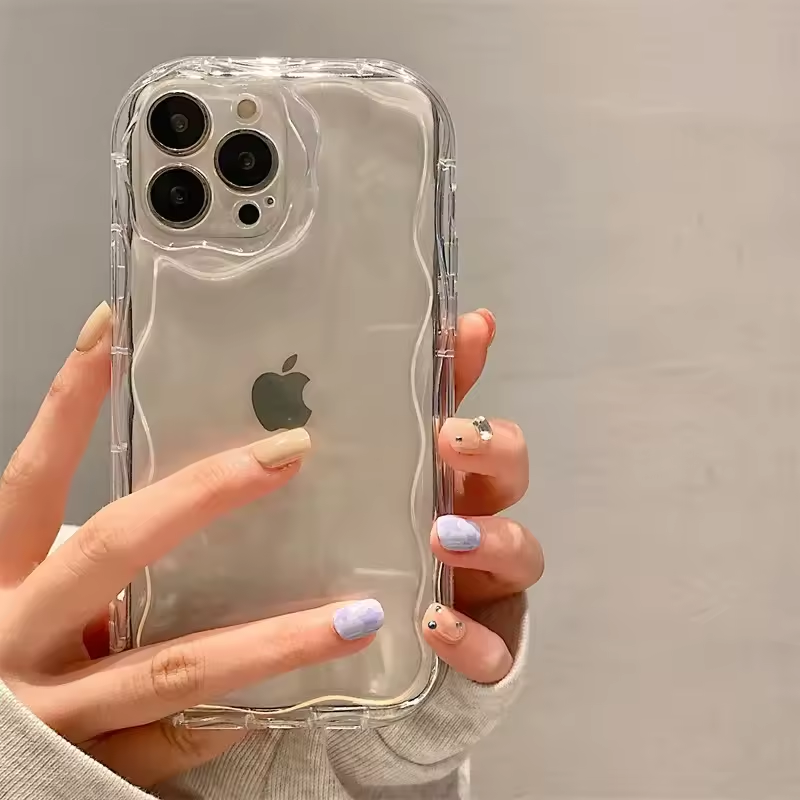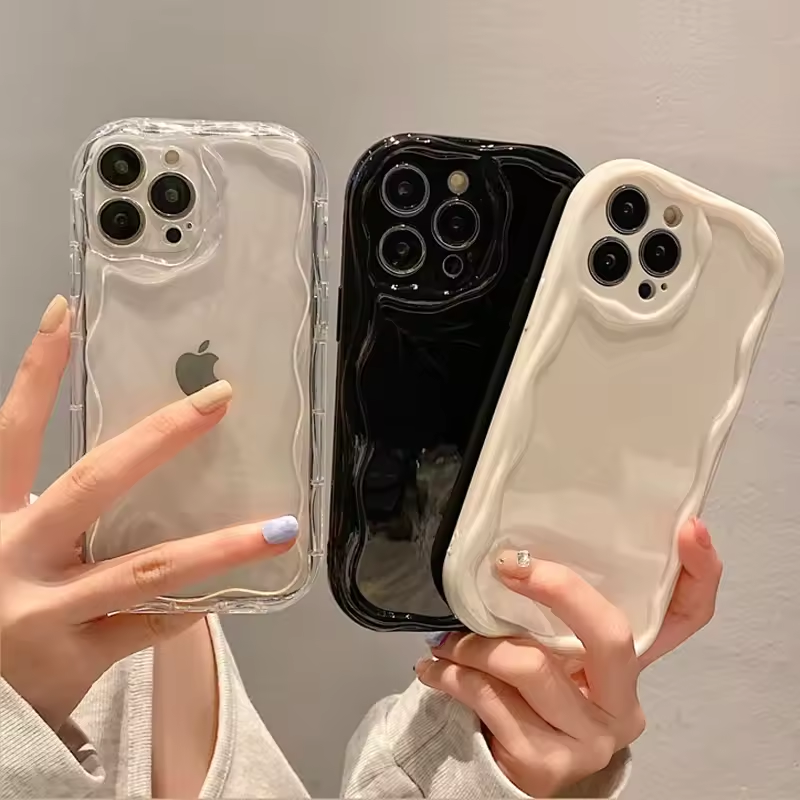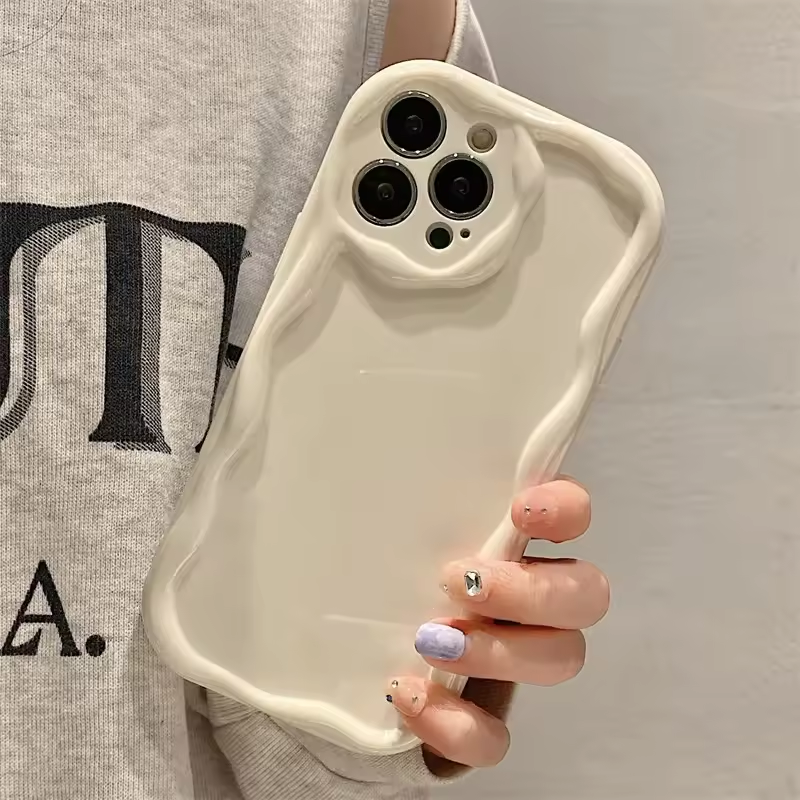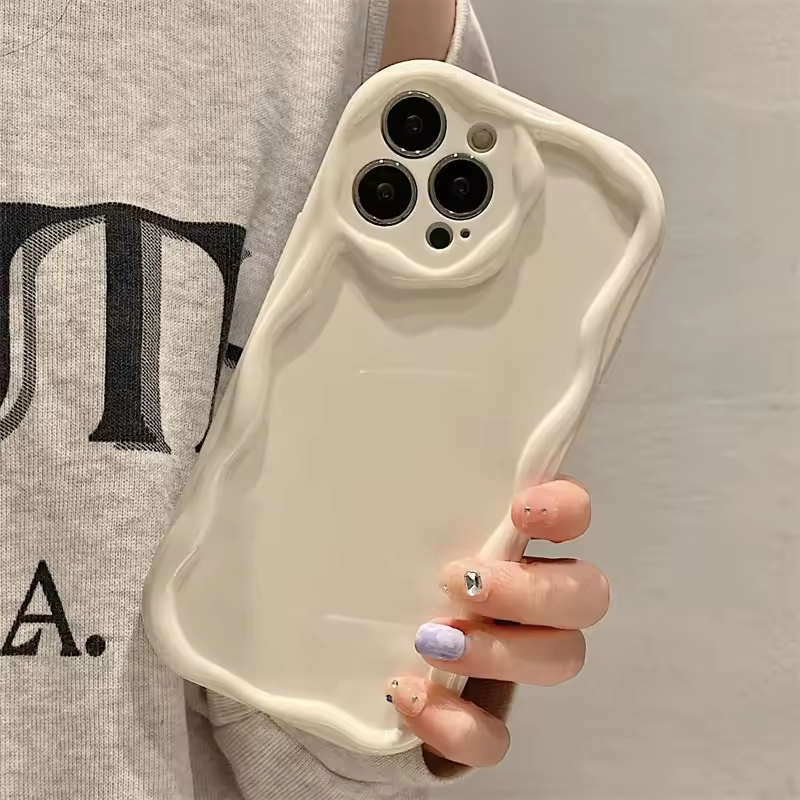Introduction to Clear Phone Cases
The clear phone case has become a fashion-forward accessory, offering both protection and aesthetic appeal. Unlike opaque designs, transparent cases showcase your device’s sleek finish while shielding it from scratches and drops. Here’s why they dominate modern tech trends:
Key Features:
- Material Innovation: Options range from durable PMMA (acrylic) for clarity to lightweight PETG for flexibility.
- Customization: From minimalist designs to the stitch phone case with textured patterns, these cases adapt to personal style.
- Functionality: Many support wireless charging and include raised edges to protect screens.

Why Choose Clear?
- Unobstructed Style: Keeps your phone’s original look visible.
- Versatility: Works for all phone models, from iPhones to Samsung flagships.
- Low Maintenance: Easy to clean with a microfiber cloth.
Popular Uses:
- Tech Enthusiasts: Highlight device design without compromising protection.
- Eco-Conscious Users: Opt for recycled plastic or biodegradable options.
The clear phone case balances form and function, making it a top choice for those who want to keep their device safe and stylish.
Key Materials Used in Clear Phone Cases
The clear phone case’s performance hinges on its material, which balances transparency, durability, and affordability. Here’s a breakdown of the most common materials and their trade-offs:
1. PMMA (Acrylic)
- Pros: Highest clarity, mimicking glass without the weight. Ideal for showcasing high-end devices like iPhones.
- Cons: Prone to cracking under heavy drops.
- Best For: Users prioritizing aesthetics over extreme ruggedness.
2. PETG (Polyethylene Terephthalate Glycol)
- Pros: Lightweight, shatter-resistant, and flexible. Absorbs impacts better than PMMA.
- Cons: Slightly foggy compared to acrylic.
- Best For: Daily use with occasional drops.
3. Polycarbonate
- Pros: Affordable and lightweight. Widely used in budget-friendly cases.
- Cons: Susceptible to scratches and cracks over time.
- Best For: Cost-conscious buyers needing basic protection.
4. Glass-Like Materials
- Pros: Premium look with crystal-clear transparency.
- Cons: Heavy and requires tempered glass layers for durability.
5. Eco-Friendly Options
- Recycled Plastic: Made from ocean-bound materials.
- Biodegradable Polymers: Decompose in 6–12 months but may lack durability.
Key Considerations
- Wireless Charging: Ensure materials don’t block signals (avoid metal trims).
- Scratch Resistance: PMMA and PETG outperform polycarbonate in longevity.
The best clear phone case material depends on your priorities—whether you seek ruggedness, eco-consciousness, or minimalist style.
Features to Look for in a High-Quality Clear Phone Case
Choosing the best clear phone case requires evaluating features that ensure both protection and style. Here’s what to prioritize:
1. Material Quality
- Opt for PMMA (acrylic) or PETG for clarity and durability. Avoid polycarbonate for its susceptibility to scratches.
2. Drop Protection
- Look for reinforced edges and corners to absorb impacts.
3. Scratch Resistance
- Coatings like Gorilla Glass or UV-treated surfaces reduce scuffing.
4. Precise Cutouts
- Ensure ports, cameras, and speakers align perfectly. Misaligned cases may cause damage.
5. Wireless Charging Compatibility
- Choose non-metallic designs to avoid signal blockage.
6. Design Customization
- Options like the stitch phone case add texture without sacrificing transparency.
7. Button Accessibility
- Check tactile feedback for volume and power buttons.
Conclusion
The clear phone case with these features balances aesthetics and functionality, making it ideal for tech-savvy users who value both style and durability.
Design Trends: Customization and Aesthetic Appeal
The clear phone case has evolved beyond a mere protective shell, becoming a canvas for self-expression. Here’s how customization and design trends redefine modern phone accessories:
1. Personalization Options
- Engraving: Add initials or logos.
- Printed Designs: Upload photos or art via brands like Case-Mate.
- Stitch Phone Case: Embroidered patterns for textured elegance.
2. Material Innovations
- Gradient Tints: Soft hues without obscuring the phone’s finish.
- Textured Surfaces: Matte finishes or laser-etched patterns for tactile appeal.

3. Popular Styles
- Minimalist: Ultra-thin designs for a “naked” phone look.
- Retro Vibes: Vintage-inspired patterns or faux-leather accents.
- Neon Accents: Glow-in-the-dark trims for bold statements.
4. Sustainable Trends
- Modular Cases: Detachable panels for easy upgrades.
- Plantable Seeds: Cases embedded with wildflower seeds for post-use planting.
5. Tech-Driven Customization
- AR Apps: Preview designs via apps like CaseThread before purchasing.
The clear phone case now merges functionality with artistry, letting users tailor their device to reflect personality while maintaining sleek aesthetics.
Compatibility with Wireless Charging
Wireless charging has become a standard feature in modern smartphones, making compatibility a critical factor when selecting a clear phone case. Here’s how to ensure your chosen case doesn’t disrupt this convenience:
1. Material Selection
Opt for cases made of materials like PETG or PMMA (acrylic), which allow magnetic resonance to pass through. Avoid cases with embedded metal accents, magnets, or thick plastic coatings, as these block signals.
2. Design Considerations
- No Metal Layers: Even small metal trims or decorative elements can interfere with charging coils.
- Alignment Precision: Ensure the case’s thickness (ideally under 3mm) doesn’t misalign the phone with the charger’s coils.
3. Brand Solutions
Brands like OtterBox (Clear + Frame series) and Spigen (Tough Armor Clear) design cases with wireless charging in mind, omitting obstructive materials. The stitch phone case also offers non-metallic variants for seamless compatibility.
4. Certification Labels
Look for “Qi-certified” or “MFi-certified” labels, ensuring the case meets industry standards for wireless charging.
5. Testing Methodology
- Place your phone in the case on a wireless charger. If it doesn’t heat up within 1–2 minutes, compatibility issues exist.
- Compare charging speed with and without the case; some cases may reduce efficiency by 10–20%.
6. Performance Trade-Offs
Even compatible cases might slow charging slightly due to added thickness. Prioritize cases with ultra-thin designs for optimal performance.
The best clear phone case balances aesthetics with functional compatibility. Prioritize materials, certifications, and brand reliability to avoid wireless charging frustrations.
Eco-Friendly Options: Sustainable Clear Phone Cases
The demand for eco-conscious tech accessories has spurred innovation in clear phone case design. Here’s how brands are making sustainability a priority:
1. Recycled Materials
Cases crafted from post-consumer plastics reduce landfill waste. Brands transform ocean-bound materials into durable, transparent shells, diverting 1,000+ tons of plastic annually.
2. Biodegradable Solutions
Plant-based polymers (such as cornstarch blends) decompose in 6–12 months. Examples include cases made from mycelium or bamboo pulp, leaving minimal environmental footprints.
3. Carbon-Neutral Production
Manufacturers offset emissions via solar-powered factories and reforestation partnerships.
4. Modular Designs
Cases with interchangeable panels (like the stitch phone case) allow users to replace worn parts instead of discarding the entire product.
5. Zero-Waste Packaging
Brands now use mushroom-based or paper-based packaging, avoiding plastic waste.
The best clear phone case balances eco-consciousness with functionality. Opt for brands transparent about sourcing and carbon impact to align tech needs with planetary health.
Common Misconceptions About Clear Phone Cases
Myths about clear phone cases often mislead users into overlooking their benefits. Here’s the truth behind five widespread misunderstandings:
1. “They’re Fragile”
High-quality cases made of PMMA (acrylic) or PETG are just as durable as opaque options. Brands like Spigen’s Tough Armor series offer reinforced edges that withstand drops and scratches.
2. “Wireless Charging Won’t Work”
Compatibility hinges on material choice. Non-metallic designs (such as the stitch phone case without trims) allow seamless wireless charging, while thick plastic or embedded magnets disrupt signals.
3. “Transparent Means No Protection”
Premium cases feature raised screen borders, camera cutouts, and reinforced corners—critical features found in both clear and opaque designs.
4. “Customization Compromises Functionality”
Textured patterns, engraved logos, or subtle stitching enhance aesthetics without sacrificing protection. Brands like Case-Mate offer customized clear cases with structural integrity.
5. “Clear Cases Are Overpriced”
Budget-friendly options like ECOCase provide basic protection for under $10, while mid-range picks balance affordability with durability.
The best clear phone case combines style and practicality. Prioritize materials, certifications, and reviews to avoid falling for these myths and find the right fit for your device.
Final Tips for Choosing Your Perfect Clear Phone Case
Selecting the best clear phone case requires balancing aesthetics, functionality, and personal needs. Follow these steps to find your ideal match:
1. Material Priority
Choose PMMA (acrylic) for clarity or PETG for impact resistance. Avoid polycarbonate for its scratch-prone surface.
2. Wireless Charging Check
Ensure no metal trims or thick layers block signals. Test compatibility by charging with the case on.
3. Customization Options
Opt for textured designs like the stitch phone case or engraved patterns without compromising protection.
4. Budget and Brand Reliability
- 5–15: Spigen or ECOCase for basic protection.
- $20+: OtterBox or Incipio for premium features like raised edges.
5. Eco-Conscious Choices
Look for recycled materials or biodegradable options to reduce environmental impact.
The clear phone case that suits your lifestyle blends style, durability, and tech compatibility—prioritize these factors for a long-lasting choice.